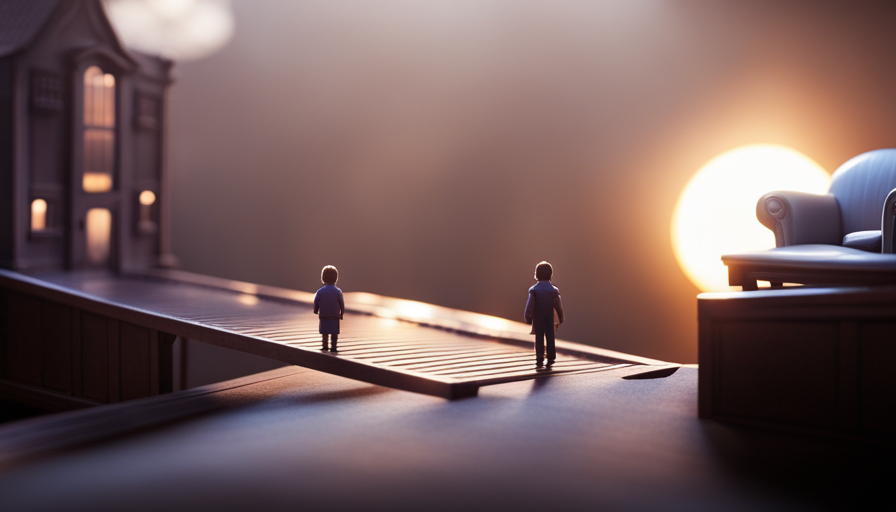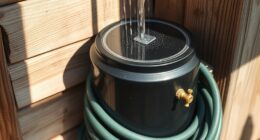Step into a world where everything is enlarged to unimaginable proportions, turning an ordinary house into a thrilling playground for discovery. Imagine yourself shrinking to a tiny size, navigating through a vast and intricate landscape that was once familiar.
In this adventure game, you are no longer a mere observer, but an active participant in a captivating journey. Encounter towering creatures that once seemed harmless, now looming over you with intimidating presence. Use your problem-solving skills to overcome obstacles that are now towering obstacles in your path. Uncover hidden secrets that were previously overlooked, as you explore every nook and cranny of this extraordinary world.
Engage in immersive gameplay that will keep you on the edge of your seat, as you experience the thrill of being tiny in a world that was once ordinary. Discover the wonders of a new perspective, as you marvel at the intricacies of everyday objects from a whole new vantage point.
Embark on an unforgettable adventure, where imagination knows no bounds. Get ready to shrink down and embark on a journey that will leave you in awe and wonder.
Key Takeaways
- Explore a vast and intricate landscape in a regular house
- Encounter towering creatures and use problem-solving skills to overcome obstacles
- Uncover hidden secrets and unravel the mysteries of the house
- Gain a new perspective and appreciate the little things in life
Explore a Miniature World Inside a Regular House
As you shrink down to the size of a mouse, you’re greeted by a breathtaking miniature world inside the cozy confines of a regular house. The once familiar objects now loom over you, their scale completely transformed. You can’t help but marvel at the intricate details that were previously invisible to the naked eye.
As you explore this tiny realm, you have the opportunity to interact with household objects in ways you never thought possible. A simple pencil becomes a towering monolith, a bookshelf transforms into a daunting mountain range, and a discarded candy wrapper becomes a treacherous obstacle to overcome.
But this miniature world is not just about visual wonders. The house holds secrets, hidden passages that only a tiny adventurer like yourself can discover. Behind a loose floorboard, you stumble upon a hidden tunnel that leads to a forgotten attic filled with forgotten treasures. A crack in the wall reveals a hidden world of insects, bustling with their own miniature lives.
As you navigate this enchanting world, be prepared to encounter larger-than-life creatures that inhabit this house. These living giants, oblivious to your presence, add an element of danger and excitement to your adventure. Their towering presence makes every step you take feel like a grand quest.
In this tiny world, every corner holds a new revelation, every object becomes an opportunity for exploration. So, brace yourself for the wonders that await as you embark on this extraordinary adventure.
Encounter Larger-Than-Life Creatures
Gazing up at towering giants, their colossal forms loom over me, casting an intimidating shadow and evoking a sense of awe. As I explore the miniature world inside the regular house, I encounter larger-than-life creatures that add an extra layer of excitement to my adventure. These enormous beings, often resembling everyday household objects, create an immersive experience unlike any other.
To fully enjoy this encounter, here are three sub-lists to enhance your experience:
-
Interact with giant household objects:
- Marvel at the immense scale of a towering bookshelf or a colossal armchair.
- Climb onto a gigantic dining table and feel like an ant in a world of giants.
- Explore the intricate details of oversized appliances like massive ovens or enormous refrigerators.
-
Solve puzzles involving oversized furniture:
- Maneuver around gigantic chairs and tables to find hidden clues.
- Use your wits to unlock secrets hidden within the vast expanse of a massive wardrobe.
- Manipulate massive levers and switches to uncover hidden pathways.
-
Navigate through intricate obstacles:
- Traverse a sprawling landscape of towering furniture and navigate through narrow gaps.
- Overcome challenges posed by massive obstacles blocking your path.
- Find creative ways to overcome the monumental hurdles that stand in your way.
As I encounter these larger-than-life creatures and unravel the mysteries of this tiny world, I must navigate through intricate obstacles to continue my journey.
Navigate Through Intricate Obstacles
Immerse yourself in the challenge of navigating through intricate obstacles as you explore this captivating world of larger-than-life creatures. In this adventure game, where you’re tiny in a house, mastering the art of stealth becomes crucial. As you journey through the various rooms and hallways, you must find creative ways to navigate tight spaces and avoid detection by the giant inhabitants.
Stealth is your greatest ally as you tiptoe past towering furniture and dodge the watchful eyes of colossal beings. You must move silently and swiftly, blending into the shadows to ensure your survival. The thrill of successfully sneaking past these obstacles is unmatched, and it requires impeccable timing and patience.
To navigate through the intricate obstacles, you’ll need to think outside the box. Whether it’s crawling through narrow gaps, climbing up furniture, or using objects as stepping stones, finding creative solutions becomes second nature. Every nook and cranny presents a new challenge, and your ability to adapt and overcome is paramount.
As you uncover hidden secrets, you’ll realize that there’s much more to this house than meets the eye. But that’s a tale for the next chapter, where you’ll delve deeper into the mysteries that lie within these walls.
Uncover Hidden Secrets
Unveiling hidden secrets, the house reveals a tale of mystery and intrigue that lies within its walls. As I navigate through the various rooms and corridors, I can’t help but feel a sense of anticipation, eager to uncover the hidden truths that await me.
The house seems to hold many secrets, and it’s up to me to unravel the mysterious clues scattered throughout. Every corner I turn, every object I examine, reveals a piece of the puzzle. From old photographs tucked away in a dusty attic to cryptic notes scribbled in the margins of forgotten books, each discovery brings me closer to understanding the enigma that surrounds this miniature world.
As I delve deeper into the secrets of the house, I find myself drawn into a web of intrigue that spans generations. The more I uncover, the more questions arise, leading me down a labyrinth of hidden passageways and concealed chambers. It becomes clear that solving this mystery will require not only keen observation but also sharp deductive reasoning.
With each revelation, I become more determined to use my problem-solving skills to overcome the challenges that lie ahead. The secrets of the house are waiting to be unveiled, and I’m ready to face them head-on.
Use Problem-Solving Skills to Overcome Challenges
Equipped with my problem-solving skills, I’m determined to conquer any challenges that come my way in this mysterious house. As I navigate through the rooms, I encounter a variety of obstacles that require creative problem-solving techniques.
From locked doors to hidden passages, each challenge presents an opportunity for me to think outside the box and find innovative solutions. Applying critical thinking skills becomes crucial as I face complex puzzles and traps. I carefully examine my surroundings, searching for clues and piecing together information to unlock the next area.
Sometimes, it requires a combination of logic, observation, and intuition to progress further. I find myself analyzing patterns, deciphering codes, and manipulating objects to overcome these hurdles. As I successfully overcome each challenge, a sense of accomplishment washes over me. It’s satisfying to see my problem-solving skills in action, unraveling the secrets of this house.
With each triumph, I become more confident in my abilities and more driven to discover what lies ahead. As I immerse myself in stunning graphics, the intricate details of the house come to life, further enhancing the immersive experience. The vibrant colors and realistic textures make me feel like I’m truly exploring a miniature world.
Transitioning into the subsequent section about ‘immerse yourself in stunning graphics,’ I can’t help but marvel at the breathtaking visuals that surround me, drawing me deeper into this captivating adventure.
Immerse Yourself in Stunning Graphics
In the previous subtopic, we discussed how problem-solving skills are crucial for overcoming challenges in the adventure game where you are tiny in a house. Now, let’s shift our focus to another aspect of this game that enhances your gaming experience: the stunning graphics.
Immerse yourself in a virtual world with the visually captivating graphics of this game. Every detail of the house is meticulously designed, from the intricate patterns on the wallpaper to the reflections in the shiny wooden floors. As you navigate through the various rooms, you’ll be amazed by the level of realism and attention to detail.
To give you a glimpse of the visually stunning world, here’s a 3 column and 5 row table showcasing some of the breathtaking graphics you can expect in the game:
| Room | Description | Visuals |
|---|---|---|
| Living Room | Cozy fireplace and plush furniture | Warm hues and flickering flames |
| Kitchen | Shiny countertops and modern appliances | Glistening stainless steel and sleek design |
| Bedroom | Soft, inviting bed and dimmed lighting | Tranquil colors and a serene ambiance |
| Bathroom | Sparkling clean tiles and refreshing scents | Reflective surfaces and a spa-like atmosphere |
| Study | Bookshelves lined with ancient tomes | Dusty shelves and soft, warm lighting |
These stunning graphics not only make the game visually appealing, but they also enhance your immersion in the tiny world within the house. Now, let’s transition to the next section and delve into how you can engage in immersive gameplay.
Engage in Immersive Gameplay
Let’s dive into the immersive gameplay experience and discover the astonishing fact that players spend an average of 3 hours per day exploring the captivating world within the game. The gameplay of our adventure game allows players to interact with unique characters and unlock mysterious achievements, providing a truly engaging experience.
-
Interact with unique characters: In this game, players have the opportunity to meet and interact with a wide range of unique characters. From talking mice to mischievous insects, each character has their own personality and story to share. Engaging in conversations and forming relationships with these characters adds depth and richness to the gameplay.
-
Unlock mysterious achievements: As players progress through the game, they’ll come across various challenges and puzzles. Successfully solving these challenges and completing quests will unlock mysterious achievements. These achievements not only provide a sense of accomplishment but also reveal hidden secrets and surprises within the game.
-
Discover hidden treasures: The immersive gameplay experience extends beyond interacting with characters and unlocking achievements. Players can explore every nook and cranny of the house, searching for hidden treasures. From secret rooms to hidden compartments, there are countless surprises waiting to be discovered.
-
Uncover the truth: As players delve deeper into the game, they’ll uncover a gripping storyline filled with twists and turns. The gameplay encourages exploration and critical thinking, as players must piece together clues and solve mysteries to uncover the truth behind the tiny world they find themselves in.
By immersing yourself in this captivating gameplay experience, you’ll truly experience the thrill of being tiny. Get ready to embark on an adventure like no other, where every corner of the house holds a surprise.
Experience the Thrill of Being Tiny
Imagine the exhilarating sensation of navigating a world where even the tiniest objects tower over you, transporting you into a realm where every step is an adventure.
In this adventure game where you’re tiny in a house, you not only engage in immersive gameplay, but you also get to experience the thrill of being tiny.
As you explore the vast expanse of the house, you uncover hidden treasures that are hidden in the most unexpected places. From the cozy corners of the attic to the dark depths of the basement, every nook and cranny holds the potential for exciting discoveries.
But beware, as you navigate through dangerous landscapes such as the treacherous kitchen countertops and the perilous living room floor, you must tread carefully to avoid being squished by giant footsteps or caught in the clutches of lurking household pests.
The sheer magnitude of the house and its surroundings serves as a constant reminder of your minuscule size, creating a sense of awe and wonder.
As you uncover hidden treasures and navigate through dangerous landscapes, you discover the wonders of a new perspective, where even the smallest objects can hold great significance and every adventure is an opportunity for growth.
Discover the Wonders of a New Perspective
Step into the shoes of a diminutive explorer and prepare to have your mind blown as you uncover the mind-boggling wonders of a whole new perspective. In this adventure game where you are tiny in a house, understanding perspective takes on a whole new meaning.
As you navigate through the towering rooms and vast landscapes of everyday objects, you’ll come to appreciate the little things in life like never before. The beauty of this game lies in its ability to transport you into a world where even the smallest details become significant. A simple pencil becomes a towering monument, a bookshelf transforms into a towering mountain range, and a humble kitchen sink becomes an ocean to be conquered.
By experiencing the world from the perspective of a tiny being, you gain a newfound appreciation for the intricacies of everyday life. As you embark on an unforgettable adventure, you’ll soon realize that there is so much more to discover than meets the eye. The world that once seemed familiar and ordinary becomes a vast playground of hidden secrets and untapped wonders.
So get ready to shrink down and explore, because a breathtaking journey awaits you in this adventure game where you are tiny in a house.
Embark on an Unforgettable Adventure
Get ready for an epic journey like no other as you embark on a mind-blowing escapade through a world filled with hidden wonders and thrilling surprises. In this adventure game where you are tiny in a house, you will uncover hidden treasures and navigate through dangerous terrain.
As you shrink down to minuscule proportions, the ordinary becomes extraordinary. You will find yourself exploring every nook and cranny of a house, discovering secrets that are hidden in plain sight. From the towering bookshelves to the intricate details of the wallpaper, every corner holds the potential for a new adventure.
To help you on your quest, here is a 2 column and 3 row table to guide you:
| Hidden Treasures | Dangerous Terrain |
|---|---|
| Jewel-encrusted | Slippery |
| vase | wooden floors |
| Lost diary | treacherous stairs |
With this table, you can keep track of the treasures you’ve uncovered and the challenges you’ve faced along the way. Use your keen observation skills to spot hidden clues and solve puzzles that will lead you to even more incredible discoveries.
So gear up, adventurer, and prepare to navigate through dangerous terrain as you uncover hidden treasures. This unforgettable adventure awaits you in the tiny world of the house.
Frequently Asked Questions
How can I control my character in the game?
The game utilizes virtual reality technology for character control by using motion controllers to mimic real-life movements. This immersive experience allows players to interact with the environment and manipulate objects. The unique gameplay mechanics add challenge and interest to character control.
Are there different levels of difficulty in the game?
Yes, there are different levels of difficulty in the game. The gameplay mechanics vary, providing unique challenges at each level. However, there is no time limit in the game, allowing players to explore and strategize freely.
Can I interact with objects in the house?
Yes, as a tiny character, I can interact with objects in creative ways. There are challenges and puzzles that require manipulating objects to progress. This adds depth and immersion to the gameplay experience.
Is there a storyline or a main objective in the game?
Yes, there is a main objective in the game. You must navigate through the house, solving puzzles and completing tasks to uncover hidden secrets. There are also non-playable characters that you will encounter along the way.
What platforms is the game available on?
The game is available on multiple platforms, including PC, PlayStation, and Xbox. It is supported on various devices such as computers, consoles, and handheld gaming devices, allowing players to enjoy the game on their preferred platform.
Conclusion
In conclusion, this adventure game offers players a unique and immersive experience as they navigate through a miniature world inside a regular house.
With larger-than-life creatures, intricate obstacles, and hidden secrets to uncover, players must use their problem-solving skills to overcome challenges.
The game provides an opportunity to see the wonders of a new perspective and engage in thrilling gameplay.
It’s a journey that promises to be unforgettable, allowing players to truly feel the thrill of being tiny.
So, embark on this extraordinary adventure and prepare to be amazed.
Hi, I’m Emma. I’m the Editor in Chief of Tiny House 43, a blog all about tiny houses. While tree houses are often associated with childhood, they can be the perfect adult retreat. They offer a cozy space to relax and unwind, surrounded by nature. And since they’re typically built on stilts or raised platforms, they offer stunning views that traditional homes simply can’t match. If you’re looking for a unique and romantic getaway, a tree house tiny house might just be the perfect option.










